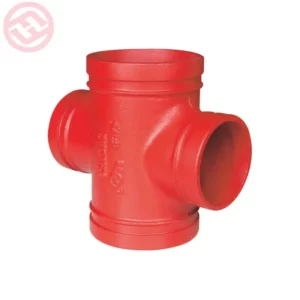Extension or joining fittings are used to connect two or more pipes or tubes together.
There are several types of extension or joining fittings, including:
Couplings: Couplings are used to connect two pipes of the same size together. They are typically made of metal or plastic and can be threaded or unthreaded.
Adapters: Adapters are used to connect pipes of different sizes or types together. They can be male or female threaded and are typically made of metal or plastic.
Tees: Tees are used to connect three pipes together at right angles. They are typically made of metal or plastic and can be threaded or unthreaded.
Elbows: Elbows are used to connect two pipes together at an angle. They can be 45 degrees or 90 degrees and are typically made of metal or plastic.
Unions: Unions are used to connect pipes together in a way that allows them to be easily disconnected for maintenance or repair. They typically consist of two parts that are connected by a threaded or flanged joint.
Flanges: Flanges are used to join pipes together by bolting them to each other. They can be used to connect pipes of different sizes or types and are typically made of metal.
Reducers: Reducers are used to connect pipes of different sizes together. They can be concentric, with the same centerline, or eccentric, with different centerlines.
Crosses: Crosses are used to connect four pipes together at right angles. They are typically made of metal or plastic and can be threaded or unthreaded.
These extension or joining fittings are available in a variety of materials, including metal, plastic, and composite materials, and they come in different sizes and shapes to fit specific piping systems. Choosing the right type of extension or joining fitting depends on the application, the materials being used, and the desired level of performance and durability.
How do I determine the right size and shape of extension fitting for my piping system?
To determine the right size and shape of extension fitting for your piping system, you need to consider several factors, including the type of pipes you are working with, the diameter of the pipes, DI Grooved Pipe Fittings and the flow rate of the system.
Here are some steps you can follow to determine the right size and shape of extension fitting for your piping system:
Determine the pipe diameter: Measure the diameter of the pipes you are working with. This will help you determine the size of the extension fitting you need.
Determine the pipe material: Different materials have different flow characteristics and may require different types of extension fittings. For example, plastic pipes may require different fittings than metal pipes.
Determine the flow rate: Calculate the flow rate of your piping system. This will help you determine the size of the extension fitting you need to ensure adequate flow.
Choose the right type of extension fitting: Consider the type of connection you need, such as threaded or flanged, and choose the appropriate type of extension fitting.
Choose the right shape of extension fitting: Consider the layout of your piping system and choose the appropriate shape of extension fitting. For example, a tee fitting may be necessary if you need to branch off into another pipe, while a reducer fitting may be necessary if you need to connect pipes of different diameters.
Consult industry standards: Check industry standards, such as those set by the American Society of Mechanical Engineers (ASME) or the International Organization for Standardization (ISO), to ensure that the extension fitting you choose meets the appropriate specifications and requirements for your piping system.
By following these steps, you can select the right size and shape of extension fitting for your piping system, ensuring that it functions properly and meets your needs.
